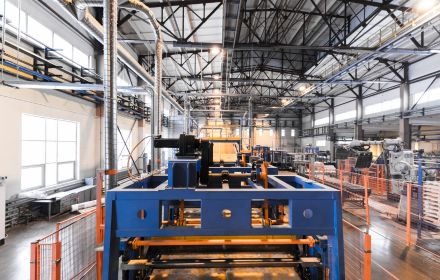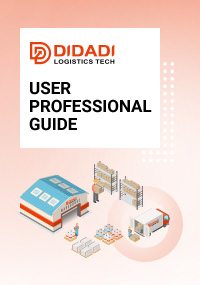Major Manufacturing Hubs in China for Importers

China remains the world’s manufacturing powerhouse — producing everything from electronics and apparel to home goods and industrial machinery. For importers, knowing where to source products within China is just as important as knowing what to buy.
The country’s vast size and regional specialization mean that each manufacturing hub has its own strengths, infrastructure, and industry focus. Understanding these differences helps importers reduce sourcing risks, improve lead times, and lower overall logistics costs.
This guide explores the major manufacturing hubs in China, the industries they dominate, and how importers can navigate them efficiently with support from professional 3PL partners like DIDADI Logistics.
Key Cities: Shenzhen, Guangzhou, Dongguan, Foshan, Zhongshan
Guangdong is the heart of China’s export economy. With its proximity to Hong Kong, advanced logistics networks, and access to global ports, it has long been the first stop for importers.
Shenzhen is famous for electronics — smartphones, accessories, drones, smart home devices, and wearable technology. The region’s ecosystem supports rapid prototyping, component sourcing, and large-scale production.
Guangzhou and Foshan lead in home appliances, lighting, and furniture manufacturing. Meanwhile, Dongguan specializes in OEM/ODM production for global brands, especially in plastics, toys, and electronics.
For importers focused on electronics, home appliances, LED products, or consumer goods, Guangdong remains an unbeatable source region.
Key Cities: Yiwu, Ningbo, Hangzhou, Wenzhou
Zhejiang is known for its flexibility, entrepreneurship, and diverse industrial base.
Yiwu is world-famous for its International Trade City, one of the largest wholesale markets on the planet. Importers can find everything from fashion accessories to stationery, tools, and seasonal decorations in one place.
Ningbo is a major export port city, strong in household products, kitchenware, and plastic goods. Wenzhou dominates the footwear, glasses, and leather goods industries. Hangzhou, the provincial capital, is home to Alibaba and a fast-growing ecosystem of DTC (direct-to-consumer) brands.
For importers sourcing fashion, consumer goods, or general merchandise, Zhejiang provides variety, strong export experience, and cost-effective options.
Key Cities: Suzhou, Wuxi, Nanjing, Changzhou
Located just north of Shanghai, Jiangsu is one of China’s most industrially developed provinces. The region has a strong foundation in industrial manufacturing, electrical machinery, and precision tools.
Suzhou and Wuxi have world-class industrial parks that support both heavy industry and high-tech manufacturing. Many European and American companies maintain factories here, ensuring international quality standards.
For importers dealing with machinery, tools, power equipment, or automotive components, Jiangsu is a prime location that combines quality manufacturing with export readiness.
Key Cities: Quanzhou, Jinjiang, Xiamen
Fujian has quietly become one of China’s most important hubs for the footwear and sportswear industries. Many of the world’s leading shoe and sports brands manufacture in or source from Jinjiang and Quanzhou.
Xiamen, a coastal city with a major port, focuses on bags, outdoor gear, and apparel. The province’s manufacturers are skilled in OEM production and have deep experience in working with overseas buyers.
Importers targeting footwear, backpacks, sportswear, or outdoor equipment will find Fujian a consistent source for quality production.
Key Cities: Qingdao, Jinan, Yantai, Weifang
Shandong’s strength lies in heavy equipment, industrial machinery, automotive parts, and construction materials.
Qingdao is a major port city known for home appliances and marine equipment. Weifang produces agricultural machinery, and Yantai focuses on auto components and tools.
While not as trendy as southern China’s hubs, Shandong is essential for importers seeking durable industrial products or B2B supplies.
Key Cities: Shijiazhuang, Langfang, Tianjin
Hebei, which surrounds Beijing, specializes in construction materials, steel, furniture, and glass products. Langfang has developed a strong furniture manufacturing base that competes with Guangdong’s Foshan in terms of cost.
Tianjin, as a port city, serves as a logistics hub connecting northern China to global shipping routes. Importers sourcing building materials, hardware, or furniture often use Hebei and Tianjin for competitive pricing and direct shipping access.
Key Cities: Chengdu, Chongqing
While eastern coastal provinces dominate exports, China’s western regions are rapidly catching up. Sichuan and Chongqing have invested heavily in manufacturing and logistics infrastructure over the past decade.
These regions specialize in automotive parts, electronics, machinery, and consumer goods. They offer lower labor costs compared to the coast, and new freight rail routes connect Chengdu and Chongqing directly to Europe under the “China-Europe Railway Express.”
For importers looking for cost savings and diversification, western China represents a promising frontier.
Shanghai may not be a manufacturing hub in the traditional sense, but it plays a critical role as a logistics, trade, and financial center. Many factories in nearby Jiangsu and Zhejiang ship through Shanghai Port.
The city hosts thousands of trading companies, sourcing agents, and 3PL providers, making it an ideal coordination center for global importers managing multiple suppliers.
Each region offers unique advantages. Importers should consider:
Product category: Electronics and consumer goods from Guangdong; apparel and fashion from Zhejiang and Fujian; machinery and tools from Jiangsu or Shandong.
Logistics access: Coastal cities provide faster port access, while inland cities may offer cost savings.
Supplier specialization: Certain clusters (like Shenzhen for electronics or Jinjiang for shoes) have unmatched expertise.
Scalability and quality: Mature hubs often have better quality control and export experience.
The key to success is finding suppliers who align with your product goals and working with a logistics partner who can bridge the gap between multiple hubs and your destination market.
Navigating China’s vast manufacturing landscape can be overwhelming — especially when managing multiple suppliers across provinces. DIDADI Logistics, a China-based 3PL (third-party logistics) provider, helps importers simplify this process.
We operate close to major industrial hubs including Guangdong, Zhejiang, Jiangsu, and Fujian, allowing us to coordinate directly with factories, handle consolidation, packaging, labeling, and export shipping.
Our services include:
Pickup and warehousing across China’s key manufacturing zones
Freight forwarding by sea, air, or courier (DHL/UPS/FedEx)
Customs clearance and documentation
Amazon FBA and e-commerce fulfillment
With DIDADI Logistics, importers can confidently source from multiple hubs without worrying about complex coordination or hidden logistics costs. Whether you are importing from Shenzhen, Yiwu, or Qingdao, our end-to-end support ensures smooth shipping from factory to destination.
China’s manufacturing power remains unmatched, but success in importing depends on more than just finding a supplier — it requires understanding where to source, how to consolidate shipments, and how to move products efficiently.
By partnering with a reliable 3PL like DIDADI Logistics, importers gain a trusted ally in navigating China’s regional manufacturing hubs, reducing risks, and building a streamlined, scalable supply chain.
Recommended Reading















